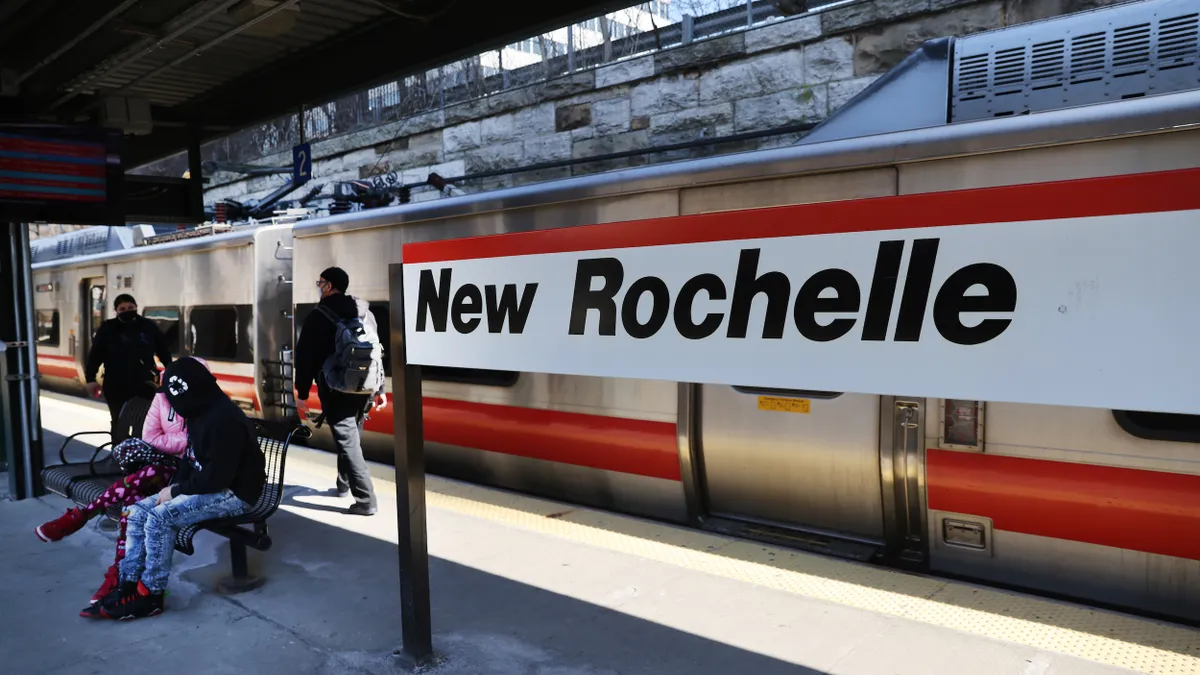In an effort to alleviate California's affordable housing crisis, Governor Gavin Newsom signed legislation in 2019 that allowed accessory dwelling units to be constructed on the same lot as an existing multifamily home.
A lack of housing throughout California has contributed to soaring housing prices in recent years, putting the cost of purchasing a home out of reach for many and leading a lot of renters to fall behind on their payments or get evicted. That trend has been prevalent in a number of cities throughout the U.S.
As a result, some developers and city officials have turned to creative solutions. Builders are converting underutilized shopping centers into mixed-use developments, San Diego is allowing developers to build more units if they designate a certain proportion as affordable, and Newsom signed sweeping measures in September 2021 intended to spur housing production across the state.
Amid the demand for affordable places to live, a growing number of people have also turned to tiny homes, which are typically 400 square feet or less, and ADUs.
“We just don’t have enough houses for everybody and so governments are getting creative on how to solve that problem and there are some really good things happening around the country," said Kam Valgardson, general manager at Utah-based modular housing company Irontown Homes.
"There’s a lot of backyards that could fit a small home,” Valgardson said during a webinar hosted by the International Code Council last week on the role tiny homes can play in solving the affordable housing crisis.
A recent survey of 1,800 people throughout the U.S. by HomeAdvisor found that searches for tiny homes increased 680% over the past 10 years and 9% per year for ADUs. Over 80% believe ADUs should be allowed in their neighborhood — with one-in-three saying they should be limited to 720 square feet or less in high-density areas — and almost 90% saying they would live in a tiny house.
There are downsides to tiny home living, though. The desire to live in a tiny home often decreases after the second year of living in one given the challenges of living with another person in very tight quarters, said Gary Fleisher, who writes the modular home construction blog, the Modcoach, during the ICC webinar. “After two years, 400 square feet feels like about 10,” he said.
The secondary market for tiny homes when that person tries to sell the property, he added, is not as strong as it is for larger homes. "Financially, when you buy a home for X amount of dollars and it's two years later and you try to go to sell it, for some reason... that second buyer is not paying two years later what a second buyer would pay two years after somebody had a 1,600 or a 2,400 square foot home," Fleisher said.
The tiny houses or ADUs that Irontown Homes builds are permanent and high-quality structures built on foundations that can have up to two bedrooms, full kitchens and living rooms, said Valgardson. Typically priced at under $100,000, tiny homes cost significantly less than larger homes.
Where they're built is also subject to restrictive local zoning laws and often pushback by local residents who object to the added population or additional cars on the street, said Valgardson. However, a number of communities throughout the U.S. have updated their rules in recent years to allow the homes.
The Salt Lake City City Council last year voted to become the first city in the country to adopt new ICC and Modular Building Institute-backed standards that address the construction of MDUs that are built off-site outside the city limits — offering a path for third-party inspection at the plants. Modular ADUs were previously not allowed under the city's code, according to Engineering News-Record.
Citing the affordable housing crisis, Amy Fowler, Salt Lake City's council chair at the time, said in a statement the new standards "allow the city to include another stock of housing that can be quick, affordable, and attainable. It gives more flexibility in the construction process for modular buildings and helps remove one of the barriers to building tiny homes.”
Valgardson said the new standards made the challenging process of installing ADUs in the city, much easier. “There’s a very quick easy path that they have developed that will allow a city or a county to become a modular friendly place to build and that opens the door to a lot of improvement and availability and affordability," he said.




















